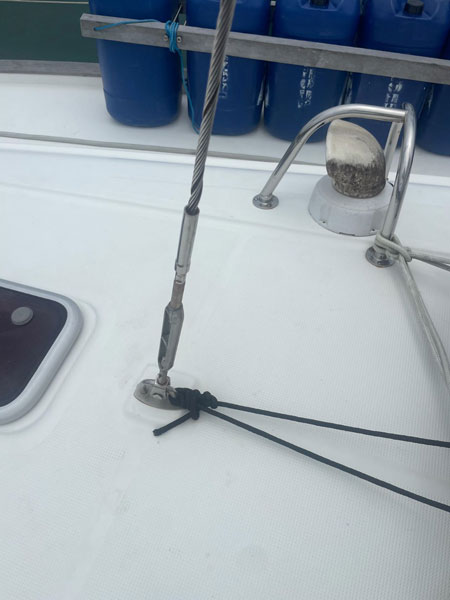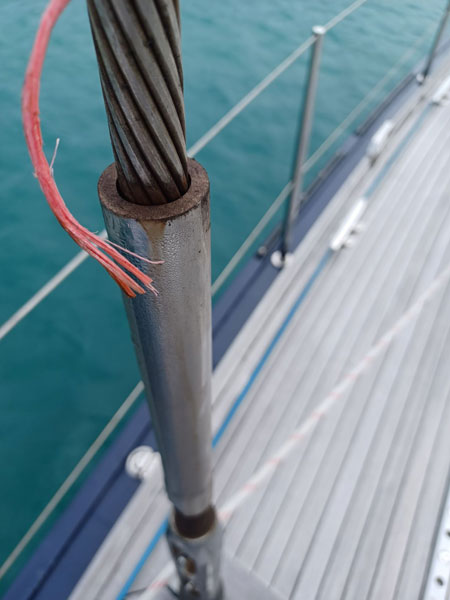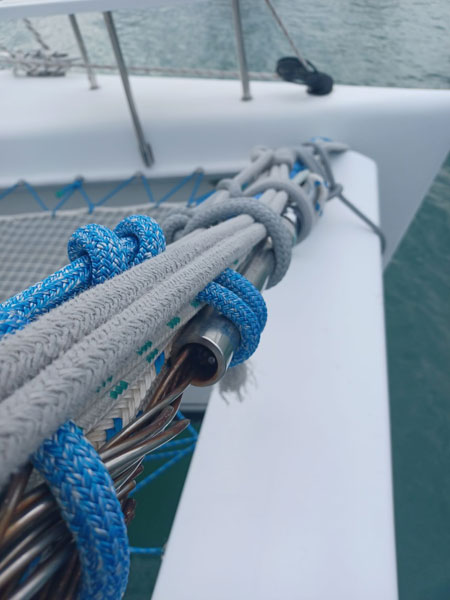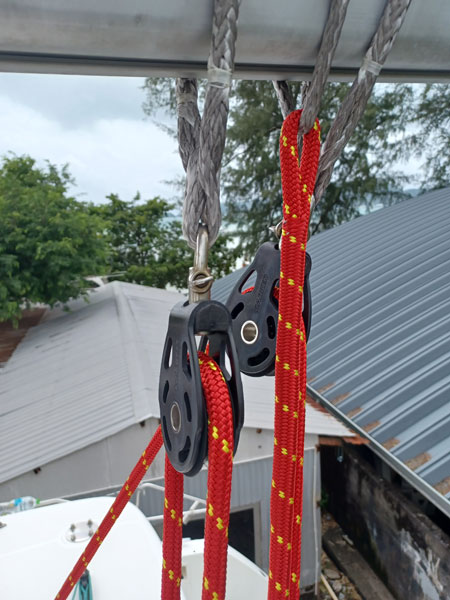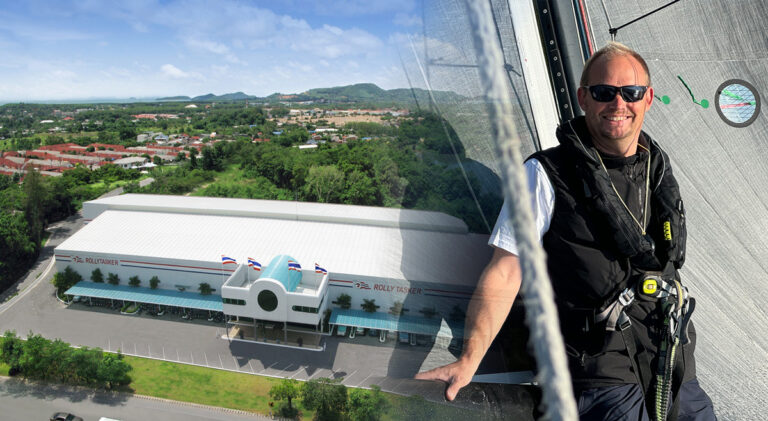Rolly Tasker Sails, conveniently headquartered in the popular world cruising hub in Phuket, is renown as the global sailmaker especially for cruising sails. But we go further. For cruising and performance racing yachts, we cater for everything from the deck up. Not only sails, but also masts and spars, deck hardware and rigging – running and standing. Our dedicated, professional rigging team can help with all issues, from a thorough rig check to the full replacement of the entire rig. This is a highly welcome service for the many bluewater and ocean cruising yachts passing through Phuket, either en route from Australia or Singapore and Malaysia to Europe or vice-versa. In any case, Rolly Tasker Sails in Phuket offers the best opportunity to check your running and standing rigging before crossing the Indian Ocean.
WHEN DO I NEED TO REPLACE MY STANDING RIGGING?
The mast of a Bermudan-rigged sailboat is normally held up by the standing rigging; a system of shrouds and stays made from stainless steel wire. This goes for the vast majority of cruising yachts. High-tech racing yachts can also have either rod rigging or stays and shrouds made from modern textile fibres. In this article however, we will look at the practicalities of wire rigging.
FATIGUE AND BREAKAGE OF STANDING RIGGING
Even the best stainless-steel wire will weaken and break at some point in time. Metal fatigue is the problem here and if it breaks, it will do so suddenly. Which can more often than not result in dismasting, something you do not want to experience. So, it really is important to keep a watchful eye on your standing rigging. And to keep it well tuned. Metal fatigue is boosted by changing loads. Your windward shrouds will be under a great strain when sailing, while the leeward shrouds will be released from any loads. Ideally, the standing rigging should be constantly tensioned uniformly, but this is not possible in practical sailing conditions. Consequently, no wire rigging will last forever.
HOW YOU CAN INSPECT YOUR STANDING RIGGING
It is advisable to visually inspect your standing rigging on a regular, almost routine basis. Check for rust stains on terminals and on the wires where theses enter the terminals, also check if the wire is smooth and not deformed in any way. Should it be deformed or distorted, this is an indication that internal strands can already be broken. In this case, replace your standing rigging! However, it is not possible to actually see “inside” the wire by eye and advancing inside damage can often go unnoticed. Also check for broken or lost split pins or rings. Check toggles and other fittings including the chain plates for wear.
HOW LONG DOES WIRE RIGGING LAST?
So, how long does wire rigging last? This is the prize question for every sailing boat owner. And there is no simple answer to this. It all really depends on the type of sailing you do, how often and how intense it is. Is it leisure and relaxed family sailing every other week-end, or hefty charter work with many thousand miles per season? Or maybe even high latitude adventures with a high frequency of heavy weather? Some but not all insurance companies require the standing rigging to be replaced every ten years, so do check your insurance policy. Some owners on the other hand keep their rigging for 15 or more years and do so without mishap, but it remains a gamble.
If you buy a second-hand boat it would be good if the previous owner could tell you how old the rigging is, or, better still, provide you with invoices to prove what has been replaced at which date.
OUR RECOMMENDATION ON RIGGING REPLACEMENT
At Rolly Tasker Sails, we recommend to replace your wire rigging every ten years – maybe less frequently if you do not sail very often, and in shorter intervals if you are rapidly hoovering up the ocean miles. But on average, a ten-year interval as rule of thumb should keep you on the safe side. When replacing the wires, we also recommend to carefully check all turnbuckles and toggles and also to replace these if you are in any doubt.
HOW MUCH DOES NEW STANDING RIGGING COST?
This very much depends, not only on the yacht’s size but also her displacement and the type of rig. Heavy long-distance cruising yachts that carry a lot of load should have a sound safety margin when it comes to choosing the diameter of the wires. If you sail to Phuket, we will come out to your yacht to measure your standing rigging which will then enable us to quote your price. We use wires made by first-class manufacturers in Australia. It really does not pay to save on the quality of your standing rigging or the related fittings as this is such an obvious safety feature. Besides, better quality wires will simply last longer.
OUR RIGGING REPLACEMENT SERVICES
We do all rigging in house, including the pressing and splicing. We can step down your mast and replace rigging and check and inspect and finally rig up again and tune the rig. We also go the extra mile and check all other rig components, such as the gooseneck fitting for example. We also provide all running rigging, if sheets and halyards are worn then this is a good time to replace these as well. And when mast is down we also service furlers, which owners normally cannot do when the rig is set up. Once in normal cruising mode, there is not very much that crews can do on furlers. The ball bearings should be watertight, so there is no grease required. Bear in mind however that furlers at the bow are extremely exposed to salt water – every wave crashes over them, so rinsing them with fresh water from time to time is a good idea.
RUNNING RIGGING MADE BY ROLLY TASKER SAILS
We make our own rope in-house, from 1.5 to 18 millimetres diameter, in Polyester or Dyneema, for halyards, sheets and all other uses. We also offer splices and soft shackles and our professional riggers can advise you on the best use of either Polyester or Dyneema ropes for your running rigging replacement.
More information about our Services in Phuket, Thailand


